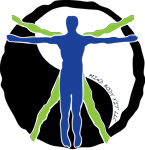I preach posture to every client that I see. From young athletes, to aging grandmas, it’s a vital component of health and wellness. It’s not only important for structural issues and aesthetics, bit for physiological systems like respiration and digestion. This article from strengthsenseiinc.com highlights some of the key benefits of posture as it relates to strength training:
A look at the many benefits of proper alignment to achieving your training goals
Strength Sensei CP
While most people understand that poor posture while sitting in front of a computer can lead to neck and back pain, often their interest stops there. They don’t consider that good posture can make a tremendous difference in how much you lift, how much muscle mass you gain, and how posture influences your risk of injury.
When you think of posture, often the image of a military soldier at attention comes to mind, standing tall with your chest up, chin-tucked in, and shoulders back. However, this is not a natural posture. To understand what optimal posture is, the go-to textbook in this field is Muscles: Testing and Function, with Posture and Pain(MTF) by Kendall, McCreary, and Provance.
According to this classic textbook, a standing, static postural assessment involves standing alongside a plumb bob, which provides a reference point. The subject would stand forward, backward, and to each side. Standing to each side enables the tester to determine not just forward head posture and shoulder posture but also the rotation of the spine. Uneven alignment of the fingertips from the front, such that one hand is lower than the other, also provides information about spinal rotation. MTFprovides drawings, photos, and a few X-rays of optional and deviant postures.
For the general population, good posture may help prevent not only back and neck pain but may even help you avoid knee and hip surgery. Several of my colleagues needed hip surgery because improper alignment of the femur destroyed their cartilage. This is why with my clients who have a history of knee pain, I spend a considerable amount of attention on strengthening the vastus medialis oblique (VMO), the tear dropped-shaped muscle on the inside of the knee. The VMO is essential for helping athletes maintain proper knee alignment while practicing and competing in their sport.
One of the key exercises I use to ensure correct knee alignment is the Petersen step-up, which targets the VMO. When I trained the Canadian National Women’s Volleyball Team in the late 80s, I found during my initial assessments that most of these athletes suffered a type of overuse injury called jumper’s knee that made bending the knees painful. I resolved this condition by focusing on the VMO, using the Petersen Step-up during my initial workouts. Not only did this resolve the jumper’s knee issue, but eventually, they could perform full squats!
Good posture helps you become stronger, bigger, and less prone to injury. (Miloš Šarčev photos)
For the upper body, correct postural alignment ensures the pathway for proprioceptive input; that is, the nervous system becomes more efficient. After correcting their alignment, I’ve seen incredible improvements in upper body strength. One athlete went from a 280-pound bench press to 400 pounds in just 16 weeks!
Another example is biceps training. First, consider that for every half a centimeter that the head moves out of alignment forward, the spine ages at least five years. Many of those teenage superstar video game champions probably have the necks of 60-year-olds. Forward displacement of the neck also affects upper body strength. I’ve seen remarkable improvements in curling strength by having athletes focus on proper neck alignment. Seriously, if you want to overcome training plateaus in biceps development, you might need to spend some time with a neck extension machine!
A good place to start to correct poor posture is to have a structural balance assessment. This assessment covers the basics of proper muscle balance, from top to bottom. From there, a corrective exercise program can be designed to help you become stronger, more powerful, and less prone to injury and chronic pain.


